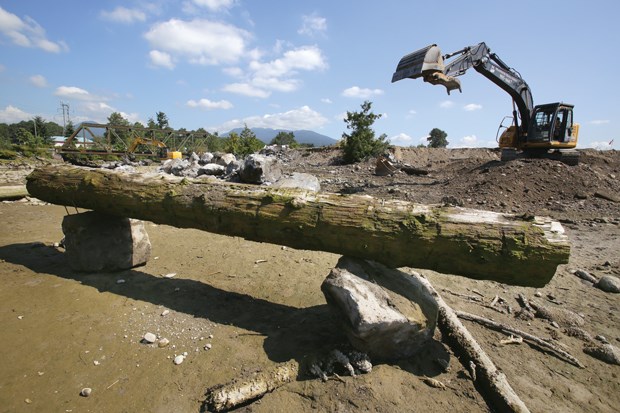An extensive rehabilitation project is underway to allow young fish safe passage through what was once among the deadliest aquatic corridors on the North Shore.
The Seymour River estuary, located just below the CN train bridge, is undergoing an approximately $440,000 renovation in order to reverse the effects of dredging that stripped the stretch of river bare.
"We knew there was a problem with the estuary, but we knew it was also going to be very costly to do anything about it," said to Seymour Salmonid Society hatchery manager Brian Smith.
Approximately 78 per cent of salmon die in the estuary, according to a three-year study undertaken by the society. "There's nowhere to hide down there. They're sitting ducks," Smith said.
The area used to be full of intertidal flats and estuaries, but heavy industry and other development has taken its toll, according to Smith. "It's been dredged, it's been relocated. It's in pretty bad shape," Smith said of the estuary.
The brackish water of the estuary is essential to let salmon acclimatize to saltwater before heading to the Burard Inlet. The process also imprints the fish with the chemical signature of the river, helping them find their way back. While acclimatizing, the fish are often easy pickings for seals and birds of prey who spot the juveniles as easily as a restaurant customer spots the lobsters in a fishtank.
The Seymour Salmonid Society would be delinquent in their duties if they didn't give the juveniles a swimming chance, according to Smith.
In order to offer the trout, coho, chinook and chum salmon a few good hiding spots, the society is adding more than 80 large debris structures, as well as boulders, and beds of eelgrass.
Volunteers will drill into the boulders and add cables to make sure nothing starts rolling during high tide, according to Smith.
The work is slated to be done over two weeks in August with another work session scheduled to complete the job in September. When complete, the estuary will be reshaped with swales to manage water run-off. "It's a pretty encompassing project," Smith said.
The project is a joint effort of the Pacific Salmon Foundation, District of North Vancouver, Metro Vancouver, the B.C. Conservation Fund, Squamish First Nation, Pacific Salmon Foundation, Royal Bank of Canada, Warner Brothers, British Columbia Institute of Technology and Northwest Hydraulics.



